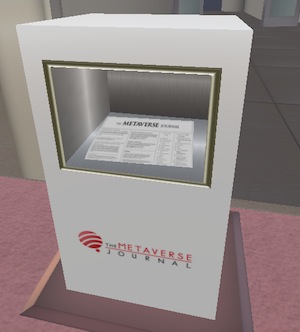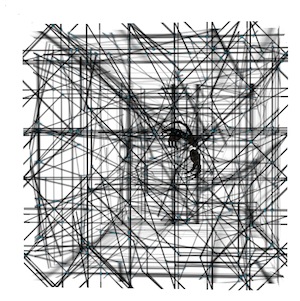 1. Macworld (UK) – CES: Money for nothing? Virtual goods market takes off. “Social networking and multiplayer online games are fueling dramatic growth in hard cash earned from goods that exist only in the world of online make-believe, according to companies in that market gathered at the Consumer Electronics Show in Las Vegas. For mainstream consumer electronics vendors, last year may have been “a year none of us would wish to repeat,” as Consumer Electronics Association President and CEO Gary Shapiro put it in a speech opening CES Thursday. Industry revenue dropped 7 percent in 2009, he said.”
1. Macworld (UK) – CES: Money for nothing? Virtual goods market takes off. “Social networking and multiplayer online games are fueling dramatic growth in hard cash earned from goods that exist only in the world of online make-believe, according to companies in that market gathered at the Consumer Electronics Show in Las Vegas. For mainstream consumer electronics vendors, last year may have been “a year none of us would wish to repeat,” as Consumer Electronics Association President and CEO Gary Shapiro put it in a speech opening CES Thursday. Industry revenue dropped 7 percent in 2009, he said.”
2. TechCrunch (USA) – PlaySpan: $30 Million Spent On Virtual Gifts Over Holiday Season. “Should we be considering virtual goods when evaluating online holiday spending? We’ve seen that e-commerce spending over the holidays was strong, with consumers shelling out nearly $30 billion over a period of a few months. Now, virtual goods platform PlaySpan reports that digital goods have seen a similar, if smaller trend, with Americans spending $30 million on virtual gifts in November and December of 2009. It’s no surprise that the digital goods world saw strong sales over the past year; the business was projected to make $1 billion in 2009. And as virtual goods are booming, various startups have emerged to capitalize on this growth by facilitating the exchange around these goods.”
3. Hypergrid Business (Hong Kong) – Intel: OpenSim supports hundreds of thousands of objects. “While most virtual worlds are limited to “thousands†of objects in a single location, OpenSim can support hundreds of thousands, according to a white paper published by Intel this month. As a result, OpenSim-based virtual worlds — like the Intel-backed ScienceSim grid — can be used to simulate complex environments for training, education, physics and chemistry, natural resources and urban planning. “The potential for other types of applications is far-reaching,†the company said. “In the health care arena, for instance, physicians might use ScienceSim to simulate the outcome of reconstructive surgery or visualize medical concepts, such as the impact of asthma or smoking on lung function, or how diet affects the circulatory system.”
4. VentureBeat (USA) – Venture capitalists are bullish on the future of game funding. “Game investing is still going strong, even though it did take a hit during the recession. We calculated that game companies raised $600.5 million in 2009, down 36 percent from the year before. But game-savvy venture capitalists are still bullish on games. We did a roundtable Q&A with some of the best-known investors, in conjunction with the launch of Interactive Age, a new magazine focused on the business of games. The magazine is edited by N. Evan Van Zelfden, who has written for us, and will debut around the time of the Game Developers Conference in March.”
5. News.com.au (Australia) – Avatar perfection causing depression. “AN IDYLLIC planet populated by blue aliens is an ideal setting for cinematic escapism. But the world of the sci-fi epic Avatar is so perfect people have admitted being plagued by depression and suicidal thoughts at not being able to visit the planet. Set in the future when Earth’s resources have been depleted, director James Cameron’s film tells the story of a corporation trying to mine a rare mineral. The humans clash with the natives – a peace-loving race of 7ft tall, blue-skinned creatures called the Na’vi, who exist in perfect harmony with nature.”
6. Wall Street Journal (USA) – Caught in the Web. “Ever since the Internet began to make its way into everyday life—beginning roughly in the early 1990s—commentators have worried over its cultural effects, fearing isolation, regimentation, a loss of privacy or a loss of sustained thought. Back then, Jaron Lanier was one of the pioneers of immersive virtual worlds and helped to popularize the term “virtual reality.” Those were the days when the Web’s promise seemed bright and limitless. Mr. Lanier was one of its champions. Now, as experience has set in, his outlook is decidedly gloomier. In “You Are Not a Gadget,” he sounds an alarm about the social-media technologies of the so-called Web 2.0, arguing that they reduce individuals to mere cogs in a mob-based, crowd-sourced apparatus. “Technology criticism,” he says in defense of his own role in this debate, “shouldn’t be left to the Luddites.”
7. Mashable (USA) – Star Trek Moves into WoW Territory With New Online Game. “he Star Trek fan’s equivalent of World of Warcraft is now playable thanks to an open beta test — and you don’t even have to spend $60 to buy the game as long as you can put up with a few bugs. While Star Trek had become a struggling franchise in recent years, the blockbuster movie reboot from J.J. Abrams that hit last May renewed interest online and elsewhere. Right now the easiest way to get a key to play Star Trek Online is to sign up for an account at gamer download mecca FilePlanet, but more choices will come.”
8. Science Daily (USA) – New Computer Vision System for the Analysis of Human Behavior. “A consortium of European researchers, coordinated by the Computer Vision Centre (CVC) of Universitat Autònoma de Barcelona (UAB), has developed HERMES, a cognitive computational system consisting of video cameras and software able to recognise and predict human behaviour, as well as describe it in natural language. The applications of the Hermes project are numerous and can be used in the fields of intelligent surveillance, protection of accidents, marketing, psychology, etc.”
9. VizWorld (USA) – State Of The Second Union: VizWorld on Second Life. “Ever since I first read Neal Stephenson’s Snow Crash, I’ve been fascinated by the idea of the Metaverse. A virtual world that completely destroys physical boundaries, allowing us to interact and mingle in a virtual space across vast distances with similar realism as being physically there. I’ve seen several virtual worlds rise and crumble, but none as persistent as Second Life. I first tried Second Life back in February of 2006, and after a single day I never returned. It was interesting, but almost overwhelming in its potential so I left it for a “later dateâ€, which never arose.”
10. VentureBeat (USA) – Saints Capital takes stake in Second Life owner Linden Lab. “Secondary investment firm Saints Capital has acquired a stake in virtual world startup Linden Lab, the owner of Second Life. Venturewire reported that Saints Capital acquired the stake from an existing investor, and that Linden Lab was not involved in the transaction. That means that one of Linden Labs’ current investors or employee stakeholders sold the shares to Saints. Linden Lab declined comment.”





Recent Comments